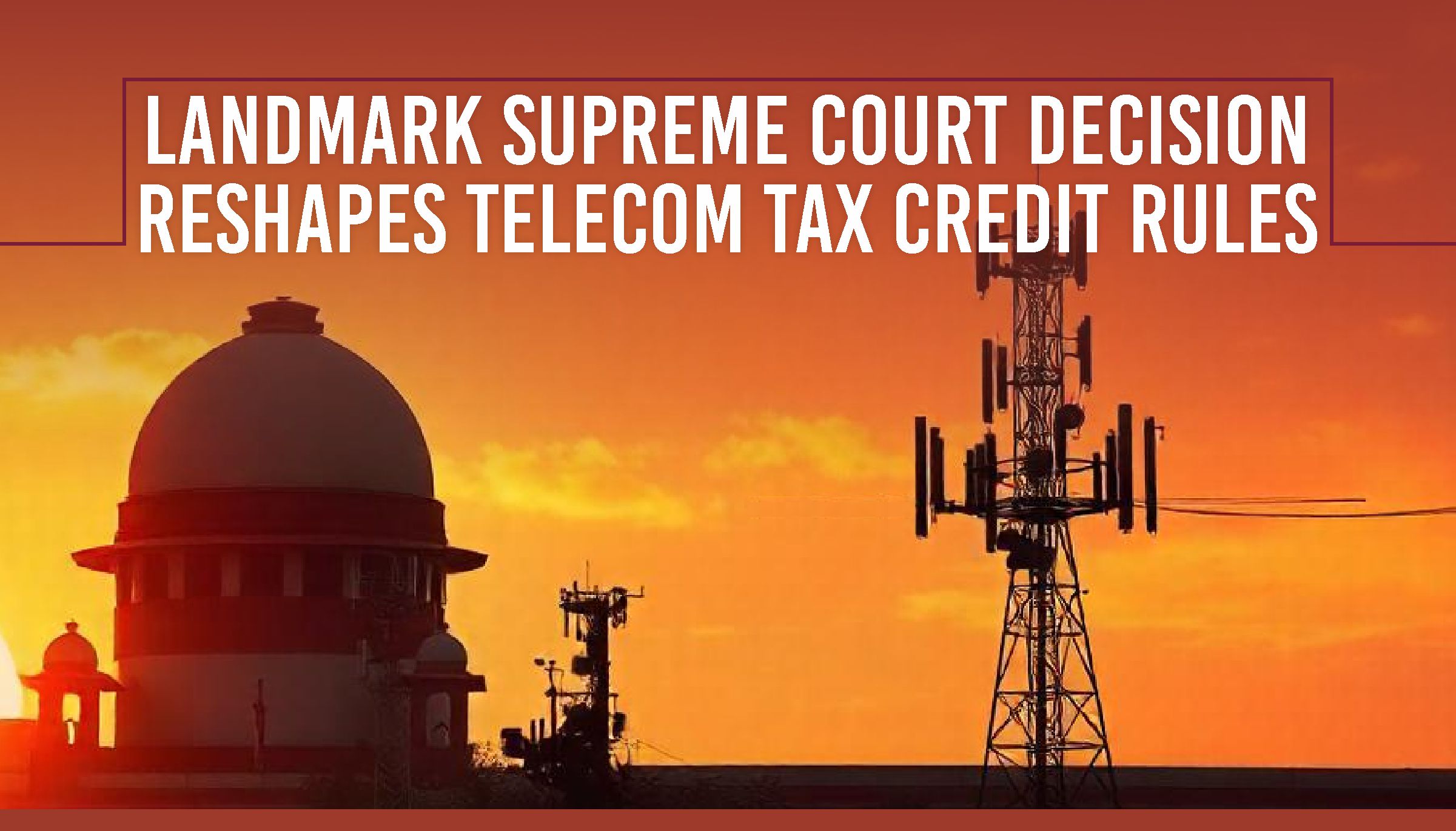Landmark Supreme Court Decision Reshapes Telecom Tax Credit Rules

In a landmark ruling, the Supreme Court of India has overturned a 2014 Bombay High Court decision, allowing telecom companies like Bharti Airtel, Vodafone, Tata Teleservices, and others to claim central value-added tax (Cenvat) credits on duties paid for infrastructure items such as tower components, shelters, and other related materials. The decision brings significant financial relief to the telecom industry, which has long battled regulatory and financial challenges.
Background of the Issue
The crux of the dispute revolved around whether telecom companies could claim Cenvat credits on certain infrastructure items. The tax authorities contended that these items, such as telecom towers, shelters, and office equipment, did not qualify as capital goods under the Cenvat Credit Rules, 2004.
Chronology of Events
-
2006: Tax Notices Issued
Bharti Airtel and other telecom operators received show-cause notices from tax authorities, alleging that Cenvat credits had been wrongly availed for items like telecom towers and shelters.
-
2014: Bombay High Court Ruling
The Bombay High Court ruled that these items were not capital goods and could not qualify for Cenvat credits. The court reasoned that:
-
Towers and shelters were immovable properties once installed.
-
These items performed independent functions and were not integral to telecom service provision.
-
-
2018: Delhi High Court Ruling
The Delhi High Court, in contrast, ruled in favour of the telecom companies. It held that:
-
Telecom towers and shelters were not permanently affixed to the ground, as they could be dismantled and reassembled.
-
These items were essential for base transmission systems and were, therefore, eligible for Cenvat credits.
-
-
2023: Supreme Court Ruling
The Supreme Court, aligning with the Delhi High Court’s view, ruled that telecom operators were entitled to claim tax credits. The court emphasized that these infrastructure items are critical to the functioning of telecom services and qualify as capital goods.
Supreme Court’s Decision
The Supreme Court, through a bench comprising Justices B.V. Nagarathna and N. Kotiswar Singh, resolved this prolonged dispute by ruling in favor of the telecom operators. The court recognized that items like towers and shelters are integral to the functioning of telecom networks and form a crucial part of the infrastructure required to deliver services. It emphasized that these items should qualify as capital goods, as they are indispensable for base transmission systems and directly contribute to telecom service provision.
This ruling aligns with the Delhi High Court’s 2018 decision, thereby providing clarity and consistency in the interpretation of Cenvat Credit Rules. The judgment not only addresses a critical financial concern for the telecom sector but also sets a clear precedent for similar disputes in the future.
Implications of the Ruling
For the Telecom Industry
-
Financial Relief:
The decision will alleviate some of the financial burdens on the telecom sector, which is already grappling with high spectrum costs and regulatory levies.
-
Encouragement for Infrastructure Investment:
With the eligibility of tax credits on key infrastructure items confirmed, telecom operators may be incentivized to invest further in network expansion, including 5G rollouts.
-
Precedent for Future Disputes:
The judgment sets a clear precedent, reducing ambiguities in tax treatment for similar infrastructure investments in other sectors.
For Tax Authorities
-
Standardization of Rules:
The ruling calls for a review of tax guidelines to ensure clarity and uniformity in the classification of capital goods.
-
Reduced Litigation:
With a definitive interpretation from the Supreme Court, similar disputes in the future may see quicker resolution.
For Consumers
-
Better Connectivity:
Enhanced financial stability for telecom operators could lead to improved infrastructure, offering better connectivity and service quality.
-
Potential Cost Benefits:
Reduced financial strain on telecom operators may eventually translate into more competitive pricing for consumers.
Industry Reactions
The Cellular Operators Association of India (COAI) hailed the decision, calling it a major step towards easing compliance and reducing financial pressure on the industry. COAI Director General S.P. Kochhar remarked that the judgment reaffirms the industry’s entitlement to claim tax credits on vital infrastructure items, including eco-friendly shelters.
The Supreme Court’s decision marks a pivotal moment for the telecom sector, resolving a long-standing dispute and providing much-needed clarity on tax credits for infrastructure items. This ruling not only reinforces the principle of fairness in tax laws but also underscores the importance of supporting critical industries like telecommunications, which are fundamental to India’s digital growth story.
